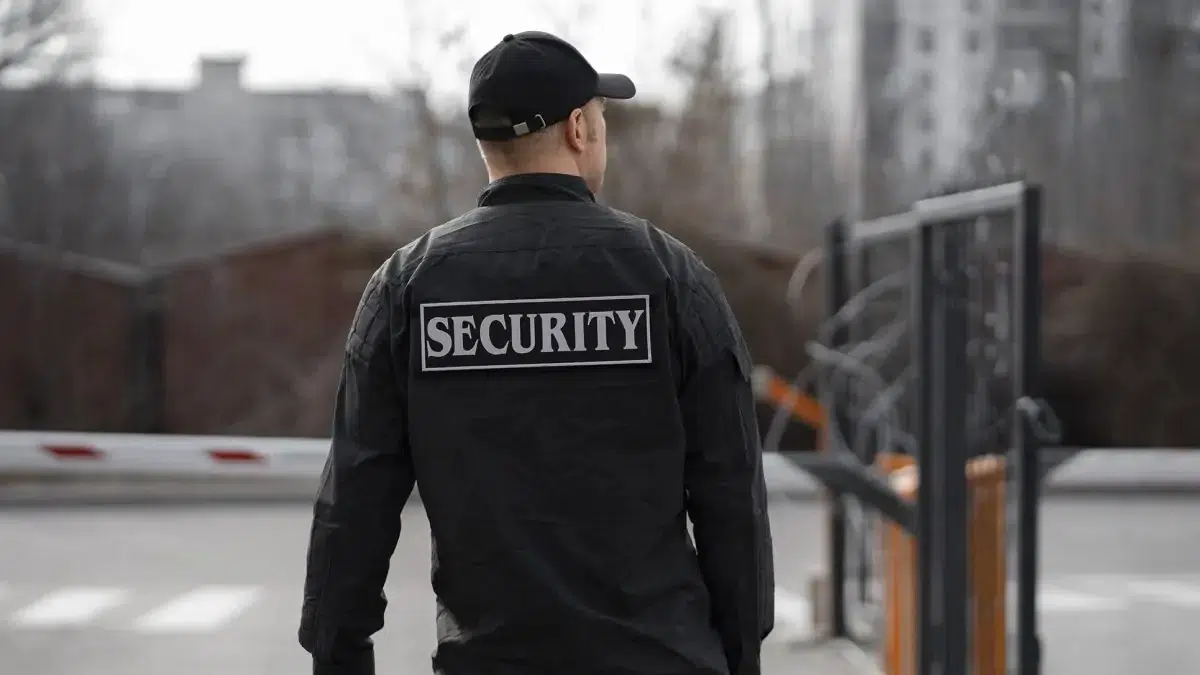
Understanding the Role of Unarmed Security Services
The Unique Advantages of Unarmed Protection
Unarmed security services play a critical role in ensuring safety without escalating tension in various environments. One primary advantage of unarmed protection is the perception of non-aggressiveness. Employing professionals who do not carry weapons fosters an atmosphere of calmness and trust, particularly in sensitive settings like schools, hospitals, and corporate offices. This environment is crucial for encouraging community engagement and promoting everyday safety without inciting fear. Unarmed security officers are trained to diffuse potentially volatile situations through effective communication and problem-solving skills rather than the show of force, which can sometimes exacerbate tensions. Furthermore, the absence of firearms can contribute positively to the mental health of employees and visitors who may have anxieties related to violence or conflict, creating a more welcoming environment.
In addition, unarmed security provides a cost-effective solution for businesses and events, as maintaining a non-lethal presence reduces insurance costs and liability risks associated with armed personnel. Companies can deploy unarmed officers as a deterrent while remaining responsible stewards of their communities. The integration of unarmed security into the safety strategy of organizations highlights their commitment to ensuring a secure yet approachable environment, further enhancing brand reputation and foster stakeholder trust.
How Unarmed Security Officers Enhance Safety Protocols
Unarmed security officers are pivotal in enhancing overall safety protocols within an organization. They are often the first line of defense, conducting regular patrols, monitoring surveillance systems, and maintaining a visible presence. This visibility itself acts as a deterrent to potential breaches, whether they be theft, vandalism, or other disruptive behaviors. The vigilance of unarmed security personnel secures properties and safeguards against unauthorized access while also ensuring that key policies and procedures are followed across various settings.
Moreover, unarmed officers are well-trained to identify signs of distress or emergency, allowing them to respond rapidly and effectively to any incidents that might arise. Their training includes crisis intervention techniques, first-aid procedures, and conflict resolution skills, enabling them to act promptly while safeguarding the wellbeing of employees and visitors. Implementing comprehensive safety protocols that include unarmed security services creates a multi-layered security system that not only addresses potential threats but also reinforces the organization’s dedication to public safety.
The Psychological Impact of Visible Security Presence
The psychological impact of having unarmed security personnel present cannot be understated. Research has shown that individuals feel safer in environments where security personnel are visibly present. This presence fosters a sense of assurance among employees, customers, and visitors alike, encouraging them to engage actively in their surroundings without the anxiety that can accompany the potential for conflict. Unarmed security officers contribute to creating a welcoming atmosphere, which is essential in establishments such as retail outlets, government buildings, and healthcare facilities. Their approachable demeanor and uniformed appearance symbolize authority without the intimidating connotations that often accompany armed security.
Moreover, the human element of unarmed officers enhances communication within the community. They are often seen interacting positively with patrons, offering assistance, directions, and engaging in conversations that reinforce a communal bond. This approachable demeanor allows them to solicit important information from the public, such as reports of suspicious behaviors, which can lead to preemptive actions being taken to avert potential threats. The psychological security that comes from this interaction is invaluable, promoting community rapport and encouraging individuals to contribute to their safety, understanding that they are part of a preventive framework rather than isolated entities in a potentially perilous world.
Choosing the Right Unarmed Security Provider
What to Look for in a Professional Security Team
When selecting a professional unarmed security provider, it is essential to consider several key attributes that delineate a reputable agency. Firstly, assess the company’s track record and experience across various sectors. A well-established firm will have testimonials and case studies that illustrate their effectiveness in providing unarmed security services. Additionally, inquire about their comprehensive training regimen for officers, including certifications in conflict resolution, customer service, and emergency response. This ensures that the security team is not only capable of handling threats but also equipped to manage a diverse array of situations with ease and professionalism.
Moreover, an effective security provider should prioritize ongoing training, ensuring that their officers are updated on the latest security protocols and industry best practices. It’s also critical to evaluate their approach to customer service; their team should be trained not only to maintain security but also to interact positively with clients and the public. As part of this, the company should leverage the value of cultural sensitivity and awareness, tailoring their approach based on the unique needs of the environment they are tasked with securing. The ability of security personnel to relate to the demographic they serve plays a significant role in fostering trust and minimizing confrontations.
The Importance of Customized Security Solutions
One size does not fit all when it comes to security solutions. A competent unarmed security provider understands the necessity of customizing their services to meet the specific needs and challenges of a client. This involves conducting thorough assessments to identify vulnerabilities and areas for improvement. For instance, securing a retail environment may require different strategies compared to safeguarding a community event or ensuring safety at a corporate office. Henceforth, it is crucial for security firms to develop tailored strategies that take into account the unique dynamics of each setting. Customized solutions might involve a mix of foot patrols, CCTV surveillance, emergency protocols, or community engagement initiatives designed to fortify safety.
Collaboration with clients during the planning and implementation processes allows for the development of security measures that are both effective and respectful of the client’s environment. Customization extends beyond operational details to include the integration of technology and personnel management. A recognized provider will recognize the value of a bespoke approach, ensuring that clients receive security solutions that align closely with their operational objectives.
Credentials That Matter: Certifications and Training for Unarmed Guards
Understanding the credentials that substantiate the competence of unarmed security personnel is critical when selecting a provider. Certification in relevant areas illustrates that the security officers have undergone adequate training to perform their roles effectively. The best practices in the industry often necessitate that security personnel complete courses that focus on conflict resolution, legal guidelines regarding the use of force, communication skills, and emergency medical response. These certifications are often obtained through accredited agencies that adhere to state regulations and standards, ensuring the professionalism of the security personnel provided.
Furthermore, continuous education is imperative in maintaining a high-level of service. Security environments change rapidly in response to new technologies, emerging threats, and evolving community dynamics. Therefore, a competent security firm invests in ongoing training sessions that contribute to their officers’ professional development, enhancing skill sets and ensuring readiness for diverse scenarios. Inspecting these credentials provides a baseline assurance of professionalism, allowing clients to have greater confidence in the security measures implemented.
Real-Life Scenarios and Success Stories
How Unarmed Security Prevented Potential Threats: Case Studies
The efficacy of unarmed security services can be illustrated through various case studies that highlight their roles in averting potential threats. In one instance, an unarmed security team at a community event was able to identify suspicious behavior among certain individuals. Quick observation and non-confrontational intervention allowed officers to engage in dialogue that diffused the situation before it escalated into any form of confrontation. Their proactive approach not only ensured the safety of attendees but also reinforced public confidence in the security team’s capabilities.
Another notable example includes the deployment of unarmed officers in a retail environment facing a series of theft incidents. By enhancing visibility and establishing rapport with employees and customers, the security team fostered a culture of vigilance among the staff while employing strategies such as monitoring suspicious patrons discreetly. The encouraging environment created led to a significant drop in theft incidents, demonstrating how unarmed personnel can empower individuals to take an active role in safety.
Community Engagement: Unarmed Officers Building Trust
Unarmed security officers excel not only at enforcing rules but also at building relationships within their communities. By engaging with locals, attending community meetings, and participating in events, they reinforce a sense of safety through visibility and approachability. In one successful initiative, a local shopping center hired unarmed officers who regularly interacted with business owners and shoppers, answering questions and offering support. These officers became known fixtures within the community, and over time, their presence discouraged criminal activities and helped generate a warm, welcoming atmosphere. This solid relationship between security teams and community members directly contributes to overall public safety by creating informal networks that foster communication and trust.
Elevating Event Security: The Role of Unarmed Officers in Gatherings
Events ranging from local festivals to corporate conferences present unique security challenges that can be adeptly addressed by unarmed security officers. For one significant corporate gathering, unarmed officers were tasked with monitoring guest access, overseeing crowd control, and ensuring that the event ran smoothly without any incidents. Their professional yet friendly approach allowed them to engage with guests while remaining vigilant for any unusual behavior. Because they were not perceived as threatening, guests felt at ease to voice any concerns, leading to immediate resolutions. This proactive engagement not only safeguarded the event’s integrity but also enhanced the overall guest experience, demonstrating how unarmed officers can play a transformative role in maintaining safety during large gatherings.
The Future of Unarmed Security Services
Innovations and Technology Enhancements in Security
As the security landscape evolves, unarmed security services must adapt by integrating technology to enhance safety protocols. This includes the use of advanced surveillance systems, smart technology for real-time reporting, and communication tools that enable rapid response to incidents. For instance, real-time analytics on surveillance footage can aid unarmed officers to detect and respond more efficiently to potential threats. Additionally, technologies like drones for aerial surveillance during large events or the application of mobile safety apps can transform how unarmed security operates, providing tools that enhance surveillance and situational awareness.
Moreover, training programs now increasingly encompass the use of digital tools, ensuring that officers can leverage technology effectively. Such innovations not only streamline the reporting process but also enable better collaboration with law enforcement agencies through shared data and immediate communication channels, creating a unified front in the pursuit of public safety.
Adapting to Evolving Threats: The Modern Security Landscape
The modern security landscape is characterized by a multitude of evolving threats, from cybercrime to social unrest, and unarmed security services must navigate these complexities with agility. Staying ahead of threats involves risk assessments that are frequent and incorporate changing community dynamics. Organizations that adopt an anticipatory approach to security will benefit from having contingency plans that address various scenarios ranging from natural disasters to public disturbances.
Unarmed security personnel also need to be educated about these evolving threats, ensuring they remain vigilant and capable of identifying subtle warning signs. For instance, training in situational awareness and de-escalation techniques is key in environments experiencing social unrest, giving them the tools to manage conflicts without resorting to force. By equipping officers with the knowledge to adapt and respond to geopolitical changes and emerging threats, organizations can ensure their security measures remain effective and responsive to current challenges.
What’s Next for Unarmed Security: Trends to Watch
As we look towards the future, several trends are set to shape the unarmed security service sector, making it a dynamic field. An increasing reliance on data-driven decision-making, fueled by technology advancements, allows security teams to anticipate potential issues based on historical data and emerging patterns. The collaboration between private security personnel and local law enforcement agencies will also likely expand, promoting community-wide safety initiatives and open lines of communication.
Furthermore, the demand for unarmed security services will likely surge, particularly as communities seek to create inclusive spaces where safety does not come at the expense of comfort. A focus on mental health across various sectors will prompt the integration of wellness principles into security practices, moving towards a more holistic view of safety. This transformation emphasizes respect for individual dignity while recognizing the vital role that unarmed security continues to play in the evolving dialogue around public safety. Ultimately, staying attuned to these trends will ensure that unarmed security services are equipped to meet the needs of the future while continuing to build trust, understanding, and protection within the communities they serve.




